Driver fitting is inarguably the most accessible of golf club fitting types. With that, it’s reasonable to say it’s also the most widely understood.
That shouldn’t suggest that every driver fitting is a good one. As with basically everything else in the golf equipment world, there’s still plenty of bad info out there but even among golfers who find difficult to get fitted, there’s likely somewhere nearby where you can work with a competent fitter or find the tools to DIY your way to better results.
While we’d strongly recommend working with a fitter, when that’s not possible (or you just don’t want to), DIY can be a whole lot easier when you know what to look for.
Before we get into that, let’s tackle the basics.
Why driver fitting is important

When you get fitted into a driver that matches your unique swing profile (what Mizuno calls your Swing DNA), the outcome is often more consistency and better results on the golf course.
An important thing to remember is that, unlike your biological DNA, your Swing DNA will change over time. Just because you got fitted for your last driver doesn’t mean you shouldn’t get fitted for your next one.
What to expect during a driver fitting session

In most cases, you should expect the fitter to work through a few heads to figure out what type of driver that’s going to work for you. Do you need shot shape correction, more forgiveness or are you a high-spin guy who will benefit from a more forward center of gravity?
Even if you’re taking the DIY route, it still makes sense to start with an idea of what you’re looking for (e.g., more forgiveness), choose a few heads that should provide what you’re looking for and go from there.
Once you’ve found the right head, you’ll likely move on to fine-tuning: finding the right shaft, dialing in weights and hosel settings … that sort of thing.
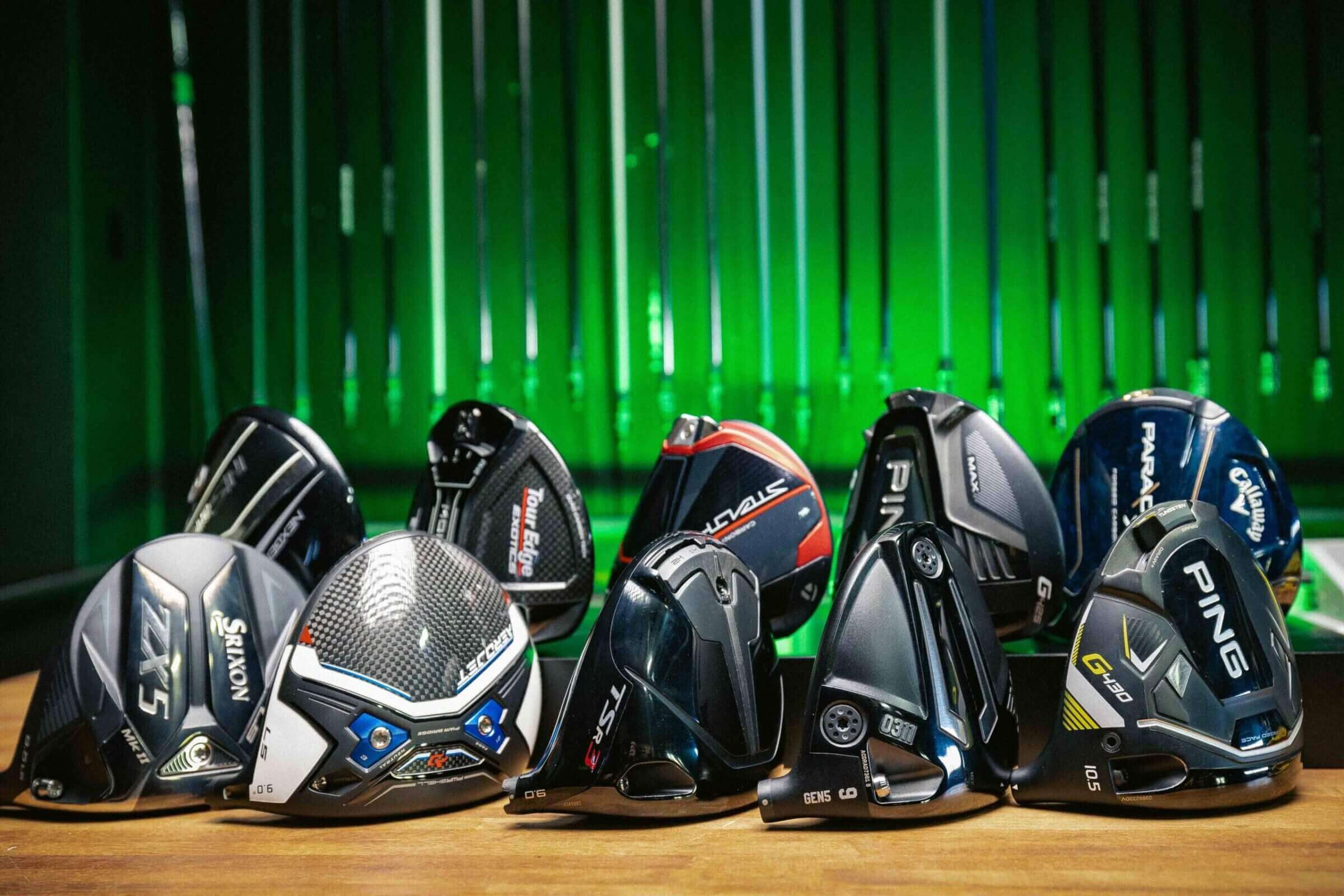
When all is said and done, you shouldn’t expect 20 more yards. That’s not to say it never happens. It certainly does but unless your current driver is an exceptionally poor fit, you should temper your expectations a bit.
You’re never going to walk out of any fitting with a driver that guarantees you’ll never hit a bad shot. Unlike robots, humans hit all kinds of bad shot but a good-performing, well-fitted driver will minimize them in both frequency and magnitude.
Ultimately, a good fitting is one that increases the probability of a desirable or at least an acceptable result.
It’s that simple. Manage your expectations accordingly.
Optimized Isn’t Always Reality
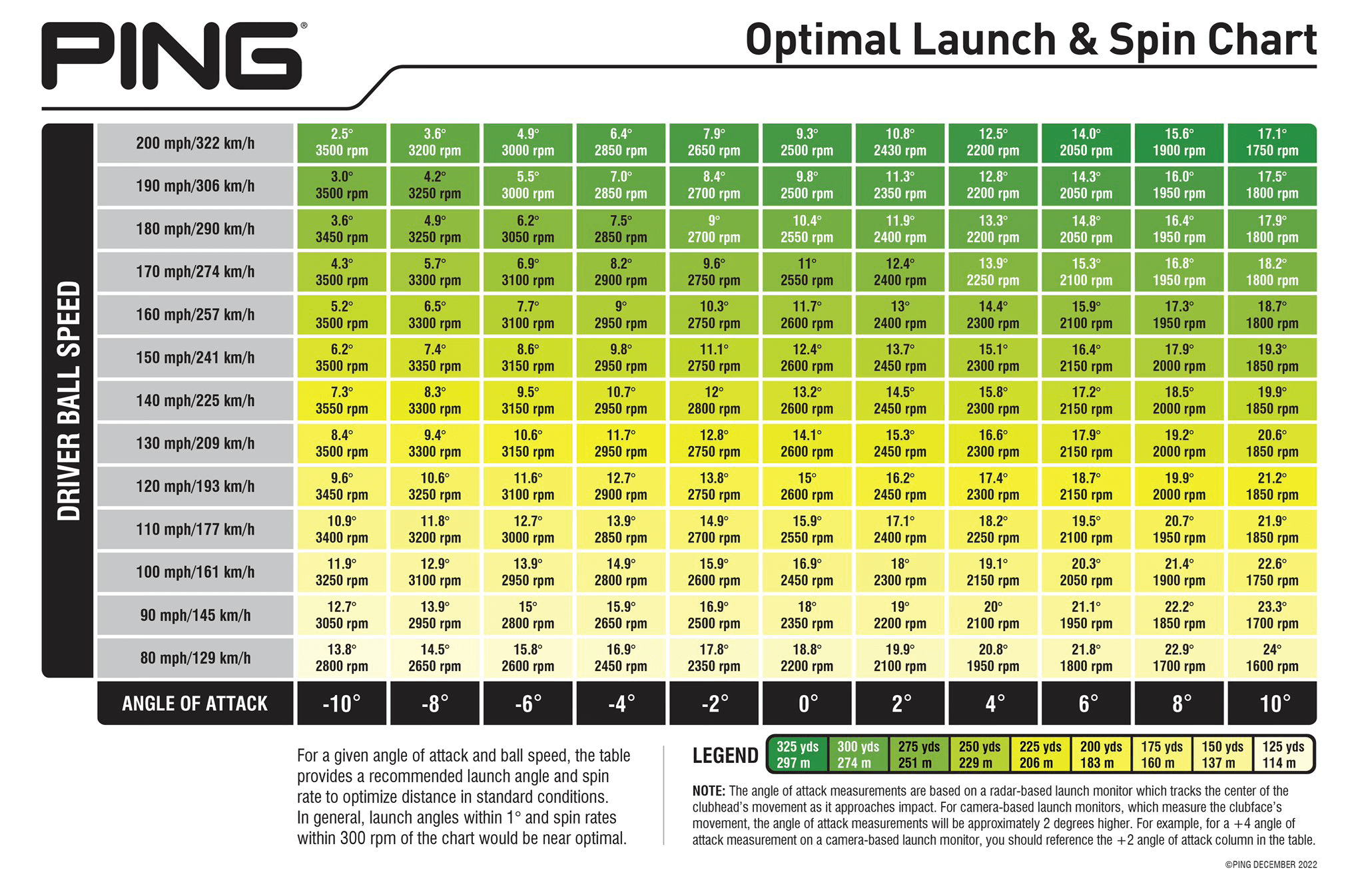
Similarly, it’s important to understand from the beginning that “optimized” may not be your reality.
You’ve probably seen charts like this one from PING. You’ve probably seen it before on this site because it’s really good and I tend to lean on it whenever I’m discussing this sort of thing.
The idea is that, based on your attack angle and ball speed, there is an optimal combination of launch angle and spin rates that is right for you.
That’s absolutely true but it doesn’t mean those optimal numbers are achievable (for you).
Some of us can get to “optimal.” Some of us can’t and you need to be OK with that. Don’t let perfect—the pursuit of optimal results—be the enemy of good results or even just better results.
Of course, you want to get as close to optimal as possible but don’t lose track of the fact that success with the driver doesn’t come from repeatedly hitting some magic combination of launch parameters.
Success comes from hitting the ball as far as you can while keeping it in (or at least close to) the fairway.
Everything else is just gravy.
The point is, just as there are no pictures on the scorecard, there aren’t any launch and spin charts, either. You don’t need perfect numbers to produce consistently good results.
With that out of the way, let’s run through a few more tips for getting the best results from your driver fitting (or DIY demo bay experience).
Bring Your Current Driver

As we’ve said countless times, you shouldn’t buy any new golf club unless it’s better than what you already have in your bag.
With that in mind, we recommend always bringing your current driver to any fitting (or DIY) session.
Not only can your driver be used to establish a baseline but we recommend that when the fitting is complete, you hit your driver again to get a better sense of whether the improvement is real.
If your new club comes with something like a 30-day guarantee, keep testing head-to-head to see if the improvements are more than just the magic of the demo bay.
For sure, I understand that sometimes we all just want new stuff, regardless. I support that but, at an absolute minimum, you should make sure the new shiny thing is at least competitive with the old thing.
Nobody should spend $600 to shoot higher scores.
Don’t Focus (entirely) on Distance

We’re talking about driver fitting so I get that I might sound like a crazy person right now but golfers tend to overvalue distance. We also sometimes tend to inflate the significance of the small distance differences we see inside hitting bays.
Here’s the reality. In any driver fitting situation, there will be clubs you hit poorly. Some will be significantly shorter. Some you won’t hit anything close to straight.
We see it year after year in Most Wanted testing.
Some drivers don’t agree with some golfers and the yardage differences can be significant.
That’s a fact.
It’s also true that among any group of drivers, it’s rare that you’ll find one that absolutely laps the field. Instead, you’ll find one or two (or three) you hit similarly long. The average distance between them will be measured somewhere between just tenths of yards and a few yards.
Now is a good time to remind you not to focus on a single best drive. Yeah, as you’re fitting/testing, you’re probably going to catch one perfectly and see a big distance number as a result.
Celebrate it and then forget it. One really good drive doesn’t tell us much.

Start with distance averages (at least a dozen swings) and when the results are close (and I bet they will be), it’s time to take a look at other numbers.
Consider that in the world of drivers, five yards sounds like a big number but in a practical sense, it’s just a handful of steps up a fairway.
So five yards isn’t really a lot and averages seldom tell the whole story. Consider that there are lots of ways to average 250 off the tee and some of them inarguably are better than others.
That’s why it’s important to look deeper into the numbers.
There are few fitting scenarios where I wouldn’t look hard at the standard deviations of my key metrics. On most every launch monitor screen, they’re the fine print under the averages.
If you’re unfamiliar, all you really need to know is that the standard deviation provides a simple measure of consistency and smaller numbers are better.
Likewise, it’s important to look at dispersion. Every launch monitor I know of will show you an elliptical scatter plot of your shots. There’s some math behind how they’re drawn and they can be subject to one or two outliers but a smaller circle is almost always preferable.
For golfers seeking maximum forgiveness, the dispersion plot may be all you need to see.
Frankly, there’s a case to be made that unless average distances are significant (way more than our five yards example), the driver that produces the tightest dispersion is the one you should buy.
Strokes Gained in a Fitting Environment
It’s increasingly common for launch monitor software to include a Strokes Gained calculation. Assuming the Strokes Gained model used by the software includes the effective penalty that comes from landing in the rough (or worse), it’s a single metric that can reduce the need to wade through a sea of other complex numbers.
While I think all of us love hitting bombs, scoring is what matters on the golf course and, again, there are no pictures on the scorecard.
I’m not suggesting you shouldn’t try and tune your ball flight to the extent possible, but a Strokes Gained approach will eliminate a good bit of the noise that sometimes comes from information overload.
If nothing else, it leaves you with a single straightforward point of comparison.
The caveat here is that Strokes Gained numbers are small so I feel it’s important to think in terms of equivalency.
A classic example I use …
Based on the Strokes Gained tables for scratch golfers, if your drive leaves you 150 yards to the hole with a fairway lie, the expectation is 3.15 strokes to complete the hole. Should your drive finish in the rough, you’d need to be 99 yards out (51 yards closer to the hole) off the tee before the expected result is as good.
FYI: If you’re five yards shorter but still in the fairway, the expectation is 3.18 strokes to complete the hole. It’s not nothing but it’s minimal in terms of the impact on scoring.
Move Off the Driving Range

Most indoor fittings are done using a projection of a wide-open driving range. Most outdoor fitting environments have few, if any, obstacles.
The benefit is that there’s no trouble to hit into and you can see how every shot flies without obstruction.
What you may not know is that most launch monitor software is able to project something more akin to an actual golf hole in a fitting scenario.
I’m talking about tree-lined fairways and rough that stops the ball quickly. You know, the kind of stuff you’ll encounter on an actual golf course.
Introducing these types of simple impediments will make your average distance numbers less glamorous but it’s also going to give you a much better sense of how the driver you’re about to buy might perform under real course conditions.
If you find yourself frequently bouncing off trees and into the rough, it becomes a bit easier to accept that the driver you’re sure you wanted just isn’t for you—even if it produces the occasional bomb.
Many golfers think that distance comes from the club while accuracy is something they can sort out once they spend some time with it.
That’s not how it works. That’s a recipe for failure and frustration.
The larger point in all of this is you shouldn’t devalue accuracy. The simple reality is that you won’t hit every fairway with your best driver and miss every one with your worst. However, you’re also going to find that your longest drivers are pretty close to one another so the one you put in (or near) the fairway more often is likely the one that’s going to lead to better scores.
Don’t Click Your Way to a Better Result

Whether you’re working with a fitter or working alone in a Big Box bay, it’s important to make sure everybody’s thumbs stay off the scale. If every bad shot is getting tossed, you’ll very quickly lose track of what’s really happening.
Just pulled one 40-yards offline? Doesn’t count. Drop it.
It counts. Don’t do that.
I get it. It’s tempting to toss everything you don’t like (especially if you’re getting fitted with a specific driver in mind) but my recommendation is to keep as many shots as possible—everything but the absolute worst misses. It’s an approach that will give you the most complete picture of performance. That includes everything from a real average distance to forgiveness and accuracy metrics (dispersion, standard deviations, etc.).
With the big picture stuff out of the way, let’s briefly run through some of the small tuning stuff.
Movable Weights
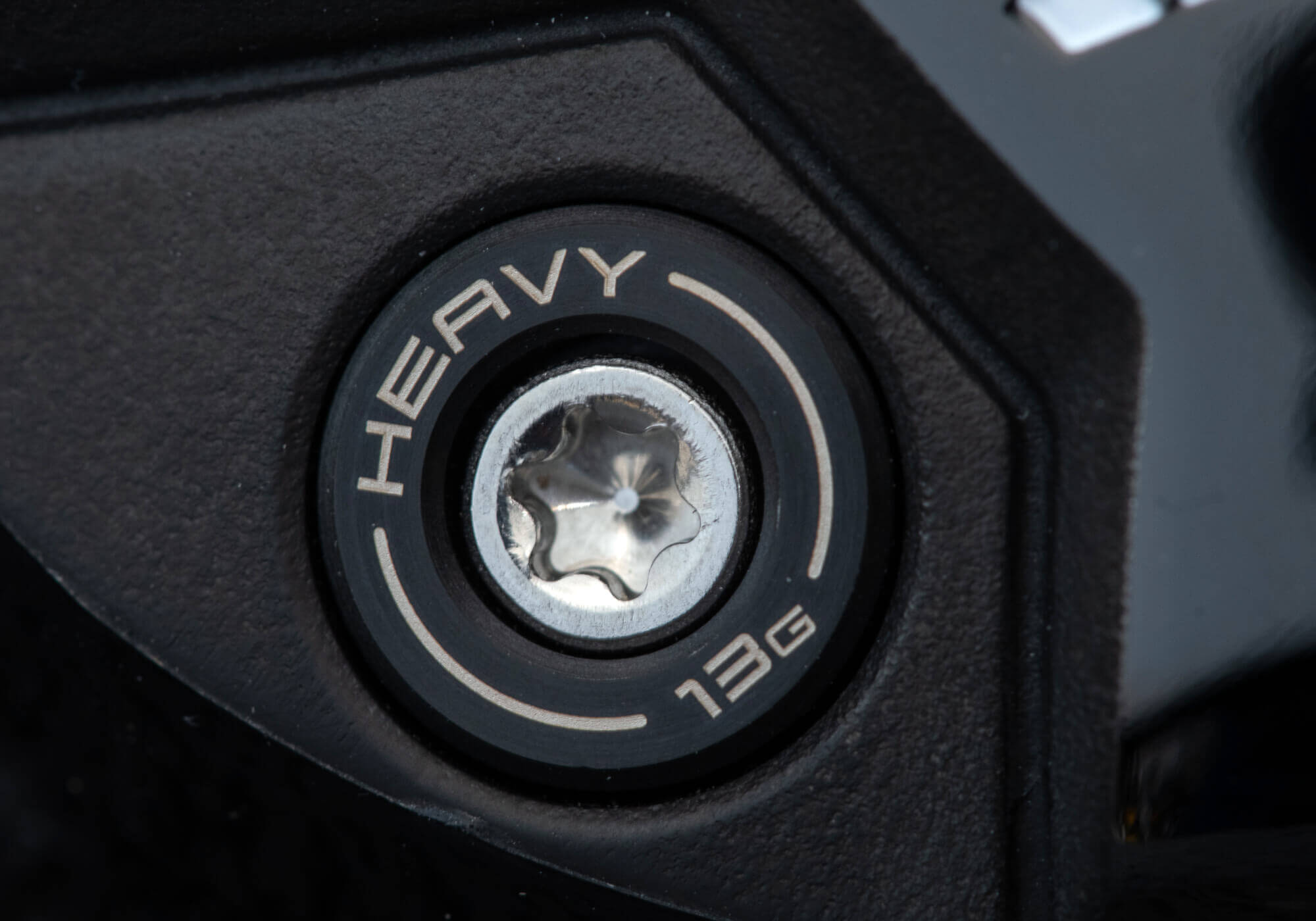
When we talk about movable weights, we typically talk about them in terms of shot shape correction. You know how this works. Moving more weight in the heel promotes a draw while putting it in the toe promotes a fade.
For front-to-back adjustable drivers, forward weight produces more speed, a lower trajectory, lower spin and lowers MOI. Putting more weight in the rear increases launch and spin while boosting forgiveness … or at least MOI.
If you really like a driver but the numbers aren’t quite right, it’s worth playing with the weights to see if you can tune your way to better.
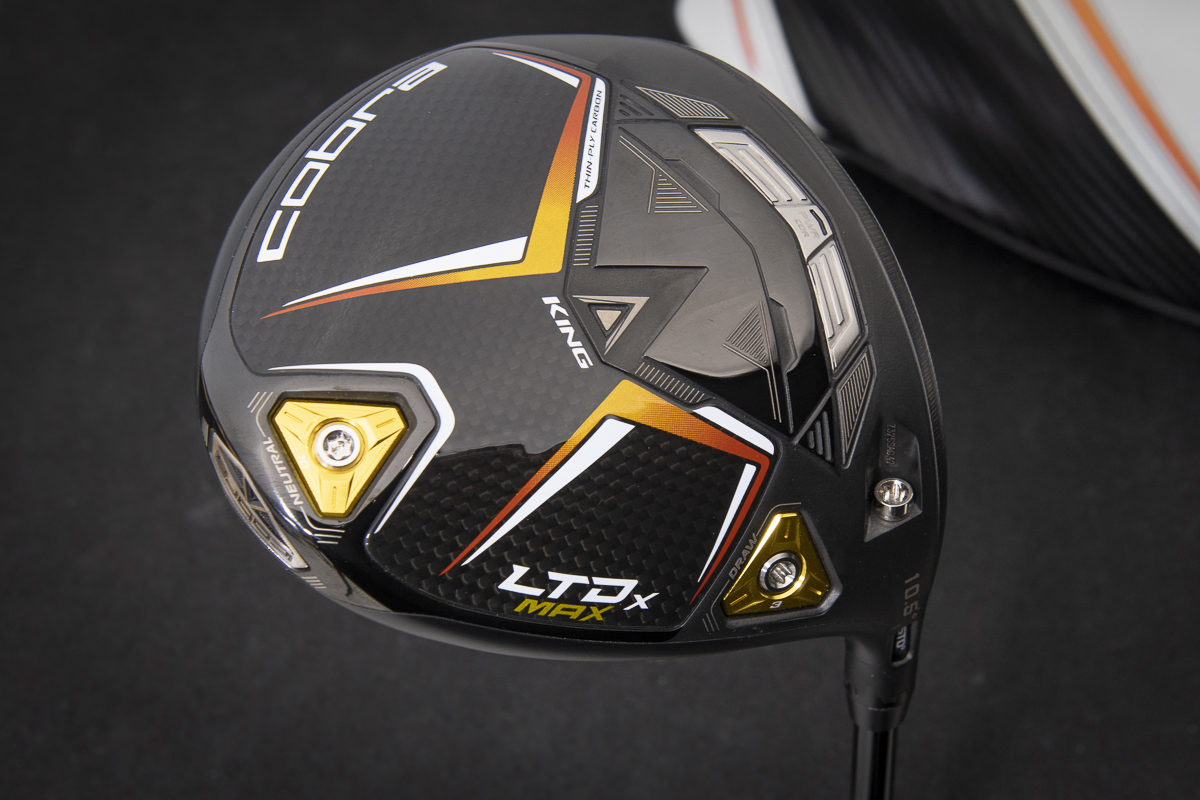
It’s also worth mentioning that moving weight forward typically introduces a slight fade bias while back positions are often more draw-biased.
How much difference moving weight makes varies by driver.
Those are the typical applications of movable weights but did you know that shifting weight to align with your typical impact pattern can increase ball speed?
If you’ve got a toe miss (particularly a straight one), moving weight into the toe can get you more distance. There can be shot shape implications so it may not work for every golfer but it’s worth experimenting with.
It’s also important to understand that a good driver fitting often involves making weight and hosel adjustments in unison.

It’s perhaps a bit of a simplification but you can think of a heel-toe weight as being responsible for curve and the hosel being responsible for the starting line.
Not every driver has the same capabilities but, as an example, I found that with my Titleist TSR3 I need to put weight into heel position to stop the ball from curving right. However, sometimes that causes the ball to fly too far left.
The weight gave me the shape I wanted but not the starting line.
The solution was to use a flat hosel setting in conjunction with the weight. By mixing heel bias in the head with a flat setting in the hosel, I get a happy medium where the ball starts a bit right and curves back.
Does it work every time? No. Again, golfers aren’t robots but it speaks to the idea that fitting isn’t about producing perfect results on every swing.
Again, we’re just looking to increase the probability of a desirable result.
Shaft Length

Unfortunately, stock lengths tend to be similarly long across manufacturers and most Big Box fitting carts don’t offer shafts in different lengths.
It’s one of the places where it really works to the golfer’s advantage to visit a premium fitting location where you can try the same shaft in different lengths.
It’s certainly not lost on golf club manufacturers that the driver buying decision is based on little more than a one-man long-drive competition. Too often golfers will buy the driver that produces the biggest single distance number. Regrettably, it doesn’t matter how often that number is achieved or where the ball that produced it landed.
The problem is that the manufacturers’ desire to maximize distance on one perfect shot creates a lot of inaccuracy on other shots.
The average driver length across the industry has crept towards 45.75 inches with many drivers closer to 46 with the grip installed.
If one great result was an accurate measure of driver performance, that would be fine but the reality is that most golfers see better results by using shorter shafts.
Generally, a shorter shaft will produce a more centered impact pattern. So while your absolute best won’t be as long, the shorter shaft will likely put you closer to the center of the face more often. The result can be a better average distance with that smaller standard deviation I mentioned, along with significantly tighter dispersion.
Every golfer is different but there is some guidance to be found in data provided by PING that suggests that for every one inch of additional shaft length, distance will increase by four yards while dispersion will increase by 10 percent.
Weight
Most modern driver heads offer some sort of adjustable weight or a tunable weight port. While we typically talk about weights in terms of shot shape correction or swing weight, adding or removing weight from the head can change performance outcomes.
A heavier head is typically more forgiving and more mass makes your driver the equivalent of a heavier hammer.
That can lead to more distance.
When the driver is too heavy, it can become harder to swing. Swing speed can drop and, with that, distance declines as well.
On a loosely related note, the center of gravity location can also impact swing speed. While that should come through in the distance numbers, it’s worth making sure that the design of the driver itself isn’t costing you speed.
The caveat here is that camera-based and radar-based launch monitors measure head speed a bit differently. With the latter, head speed measurements can be influenced by the shape of the driver and may not be directly comparable from one driver to the next.
Like most of this fitting stuff, the impact of adding or removing weight is heavily golfer-dependent so, when possible, experiment with different weights to see what feels good and produces the best results.
Again, this is a case where a premium fitting location will offer more options than you’re likely to have with a strictly DIY effort.
Grip Size
When it comes to the right grip size, there is plenty of conflicting information with a good bit of it coming from reputable sources. My takeaway is that there are lot of theories and insights but few indisputable facts.
Hand size is a decent starting point but don’t take it as an absolute. Our best recommendation is to try a variety of textures and sizes to see what feels good in your hands and ultimately produces good results.
Shaft Profiles

Most manufacturers offer three or more stock shafts in a variety of weights and flexes. As we’ve discussed before, launch profiles (e.g., “mid-launch, low-spin”) tend to be over-simplified but they can provide general guidance on where to start.
If you’re not sure what to make of it, start with the middle shaft (typically classified as mid-launch, mid- or mid-low spin) and work from there.
Shafts are generally discussed within the context of tuning launch and spin which is why they’re frequently one of the levers fitters pull to bring your numbers closer to optimal.
What’s discussed less is the shaft’s role in accuracy. Many fitters will tell you that shafts have a greater impact on dispersion than on launch and spin.
There may be something to that.
If you like a particular head but are struggling to keep it between the lines, consider trying a different shaft, even if your launch and spin numbers are good.
Sometimes a better result is as simple as changing the feel.
On a related note, there’s no such thing as a low-spin shaft.
Yes, many golfers need to reduce spin and from the fitting side, it’s a lot easier to add spin than take it away but as TXG’s Ian Fraser says, shafts don’t spin.
What that means is there’s no such thing as a universally low-spin shaft (or a universally high-spin shaft, for that matter). A shaft that produces low spin for one golfer might cause another to leave the face open, producing excessive spin.
Likewise, a shaft that produces higher spin for one golfer may allow another to square the face and result in lower spin.
I realize this doesn’t add total clarity but we need to toss that “low-spin” descriptor in the trash and understand that very often “low-launch” (which typically precedes “low-spin”) means the shaft has a stiffer tip section.
With that, some golfers will drop spin while others will struggle to square the face and will see higher launch and spin as a result.
Ultimately, it’s the totality of the bend profile (how stiffness and torque vary over the length of the shaft), along with the shaft’s torque, that influences how a shaft will perform for any given golfer.
Finally, let’s address one of our most frequently asked questions.
How Do I Find a Good Fitter?
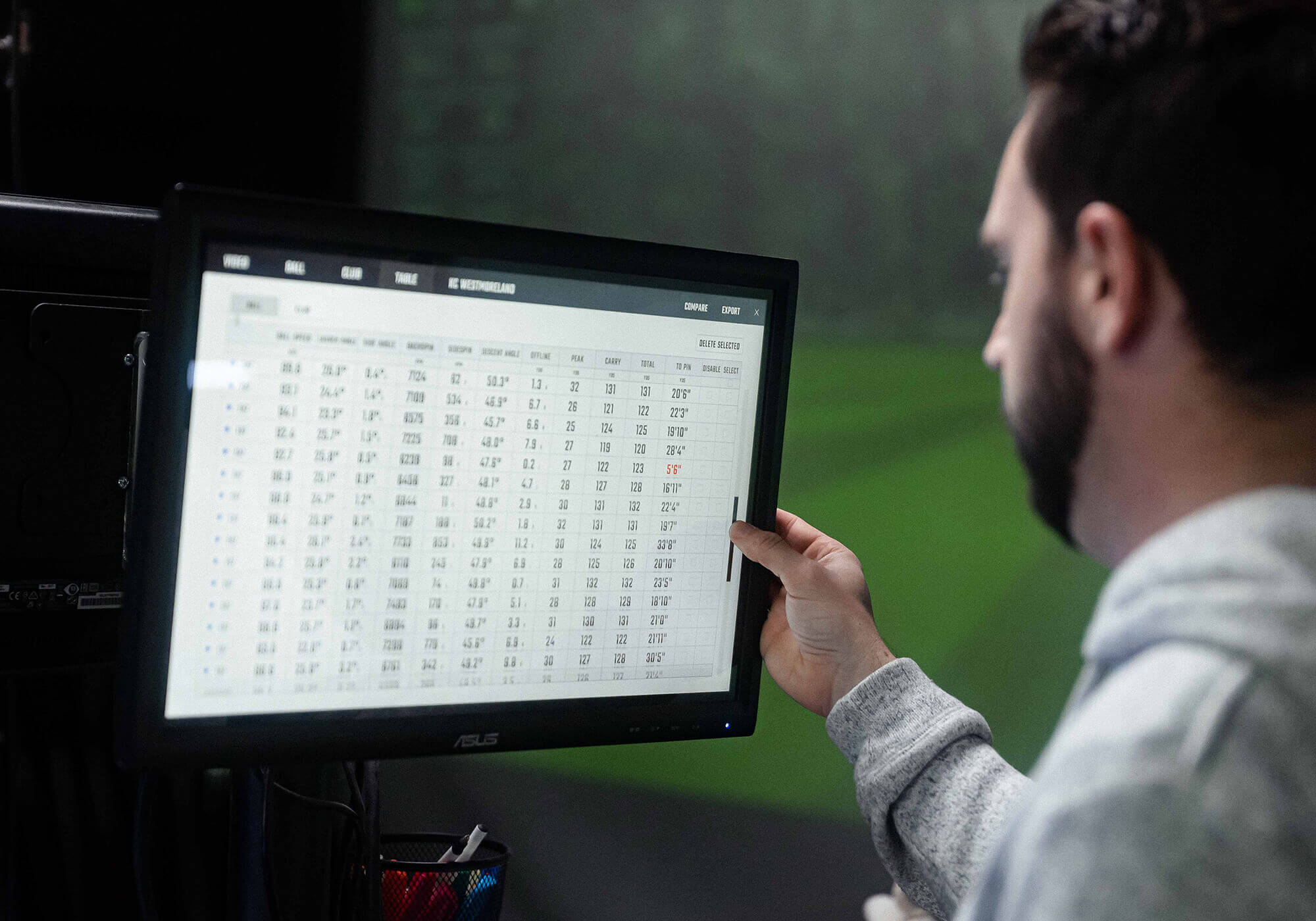
In the spirit of this series of articles, I’m going to level with you and admit there are no easy answers. With Big Box and even custom fitting chains, feedback from our readers suggests the quality of the experience varies from location to location.
Club Champion, True Spec, GOLFTEC, PGA TOUR Superstore … pick a chain. We’ve heard from readers with great experiences and readers with poor experiences.
To an extent, that’s why I’m big on word of mouth and reputation. Golf forums, YouTube, talk to anybody you know who has been fitted … look everywhere you can and find a fitter who gets results (and avoid the ones who don’t).
I’m also a big proponent of stalking your prospective fitter on Facebook. See what they’re posting. Do they appear knowledgeable and credible? Do they fit a broad swath of products or do you see the same heads and shafts over and over again?
The latter is a red flag, for sure.
If you’re OK with limiting yourself to a single brand, local fitting events can produce good results. To be sure, over the years I’ve encountered sales/fitting reps who don’t seem to know the product or what they’re doing, but in my experience, the local OEM reps generally offer among the best fitting experiences within 200 miles of where I live – and while I’m not in a big city, I’m not in the middle of nowhere either.
With that, understand that if you want a really good, brand-agnostic custom-fitting experience, you may need to travel. As I said, I don’t live in BFE, but when I asked to recommend fitters, the closest ones are between four and seven hours from home.
Sorry. Finding an outstanding fitter isn’t always easy. I suppose that’s at least part of the reason why so many of us choose to go it alone.
What Did We Miss?
As always, we hope you found this guide useful. If there’s something we missed or any follow-up questions, leave them in the comments below and we’ll do our best to address them.














steve s
11 months ago
Thanks, I think you’ve covered the subject very well. I’ve used the Ping chart and tried to get as close as I can. It’s also a great tool to temper your expectations. It you have a 90mph swing speed(130-135 ball speed) you’re not getting 250 yard carry. Get used to it and move up a set of tees. The only other thing I try to do is go back a week later and do the same fitting again to verify the results. Obviously that can get expensive but I’ve never had 2 days where I hit the ball EXACTLY the same.